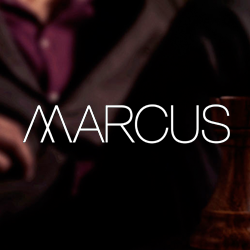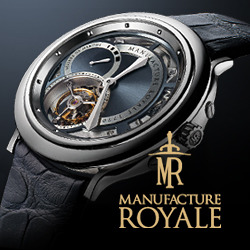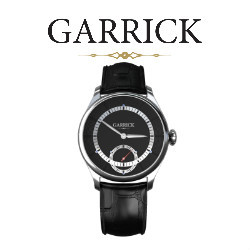If the actual Black Watch – as in “the 3rd Battalion of the Royal Regiment of Scotland” – doesn’t have its own wristwatch, it is a crying shame. Black timepieces are about as hot as they get, and that battalion’s name is used in vain a few hundred thousand times a day in watch stores the world over: “I’d like a black watch.” “Got anything in black?”
It seems that everyone loves black watches, though why this intrinsically militaristic look should possess such allure is baffling, when the most obvious watch equivalent of haute couture is a one fashioned of platinum or rose gold. Perhaps it’s the sinister Stealth fighter, which insinuated its way into the macho consciousness and has dwelt there for 30 years, or childhood attachments to Darth Vader.
Watches with black finishes have been around for decades, but the coatings themselves were always – literally – flaky. Basic anodising could never withstand the abuse meted out daily to a wristwatch, certainly not on sport watches meant to be used in environments where the case might scrape against an unyielding surface.
Watches with old-fashioned black coatings quickly acquired the look of beaten-up cameras – think of Dennis Hopper’s Nikons in the Vietnam epic, Apocalypse Now. Show any camera enthusiast a well-worn Leica, its metal body peering out in spots where the black has worn away, and they’ll sigh the sigh of an Antiques Roadshow expert enamoured of “patina” and how it cannot be faked.
Actually, that’s not quite true: Ralph Lauren’s new Safari chronograph bears a gunmetal finish with the unique look of something black that has been faded by the elements. For those who love individuality, the process ensures that no two look exactly alike. The company uses an advanced process to embed the colour into the metal at a molecular level. It is then “distressed” to look like the case has been through the wars. It’s only because of the advances in metal treatments that the Safari can be so attired. Processes such is the one used for the Safari also mean that modern black finishes are more durable than anodising.
What gave black watches a fighting chance at keeping their colour intact was physical vapour deposition (PVD), a process that deposits thin films of a given material onto various surfaces. But early black PVD watches, like the Panerai reissues of the mid-1990s, soon showed signs of wear-and-tear. Unlike those who have no problem with well-worn cameras, watch collectors have yet to display an affinity for the patina of age on black cases, though they will put up with aged dials.
What increased the hardness of black finishes to realistic levels of durability, and is preferred to PVD if costs allow, is diamond-like carbon (DLC). This describes a group of amorphous carbon materials that possess some of the hardness properties of diamond. In its toughest form, a 2μm thick coating of DLC is said to increase the durability of stainless steel against abrasion. If measured in time-vs-usage, that’s a gain from one week to 85 years.
Steel isn’t the only case that can be made in black. In 1986, IWC presented the world’s first watch in a case made of coloured ceramic. The market is now awash with all-black watches that completely avoid the matter of coatings or deposits by being made of either the latest ceramics – think Chanel, Rado, Hublot and others – or even achieving the Spinal Tap hue with cases made entirely of carbon-fibre. This path has been taken by Audemars Piguet, Mazzuoli’s Manometros, certain Blancpain Fifty Fathoms variants and every watch from the Italian new brand, Full Carbon. But carbon-fibre cases usually possess a distinctive, visible pattern under the surface, that one either loves or hates.
Black watches are offered at every price point, with entry-level models available from Victorinox, Luminox, Hamilton, Casio, Bulova and Seiko, on up through every sector to the hautest of haute horlogerie. Glycine’s instant hit for this season is an all-black military watch rightly called the Stealth, with even the hands in black, while Muhle Glashutte’s limited edition for Fulda accents the black with a red bezel.
British banner-wavers Bremont have clad a number of pieces in black, including the sleek U2, named after the spy plane. IWC and Bell & Ross also offer numerous all-black pilots’ watches while Panerai has come a long way since the 1990s PVD model. Its aptly-named “TuttoNero” (Italian for “all-black”) doesn’t just use ceramics for the case: even the bracelet is made from that material. For those with an automotive bent, Breitling has added the all-black Barnato 42 to the Bentley range, while Richard Mille, Urwerk, Franck Muller and MB&F have always offered black pieces.
Too sporty, too macho, too militaristic? The watches get dressier when you consider Hublot Big Bangs in black ceramic to counter butch offerings like the King Power Unico GMT. Piaget has blacked out its iconic Polo, Dior offers black versions of the Chiffre Rouge, while Chanel’s J12 remains the distaff black watch of choice.
And the ultimate in all-black watches? At Bond Street’s Marcus, to celebrate the shop’s 10th anniversary, Greubel Forsey produced one of every model it has made in black. Ten watches, average price of £450,000 – black isn’t just beautiful. It can also prove costly.
(Brummell, 2012)











